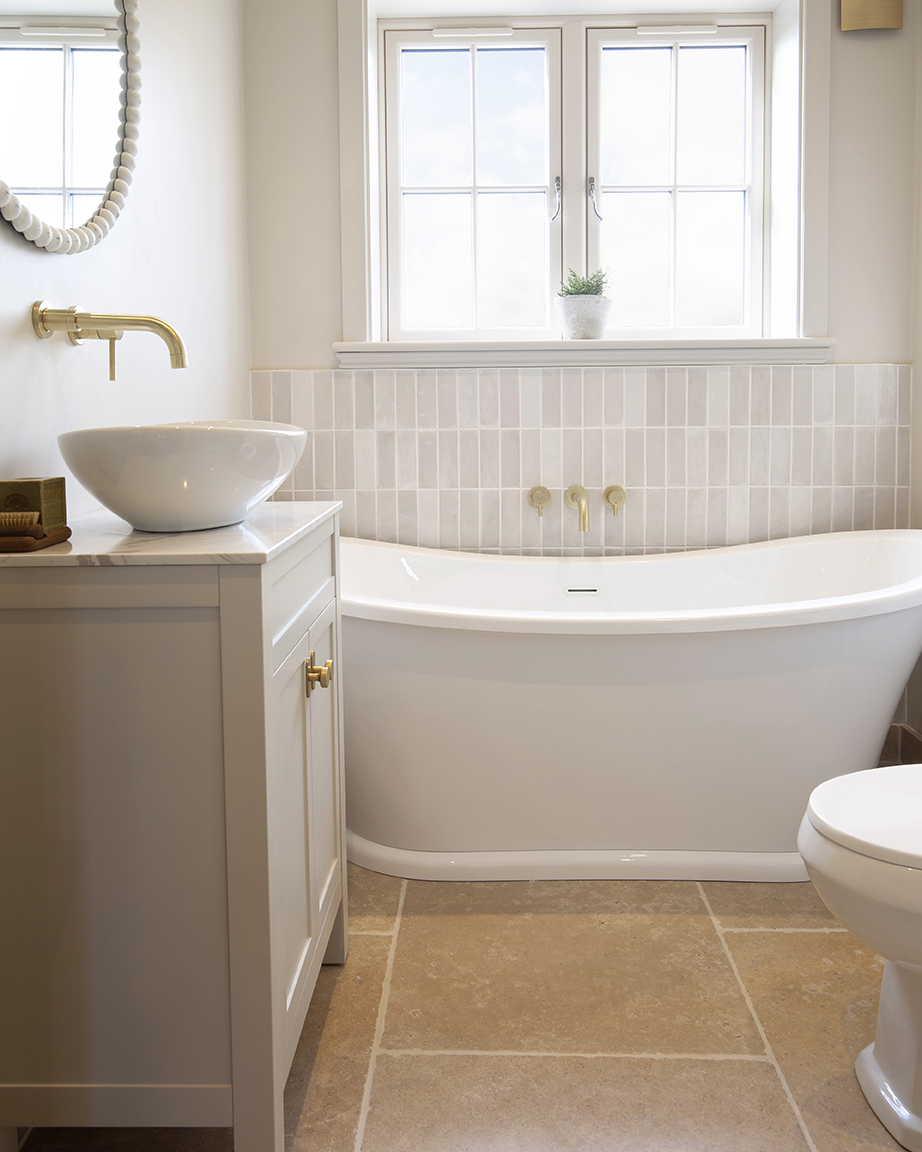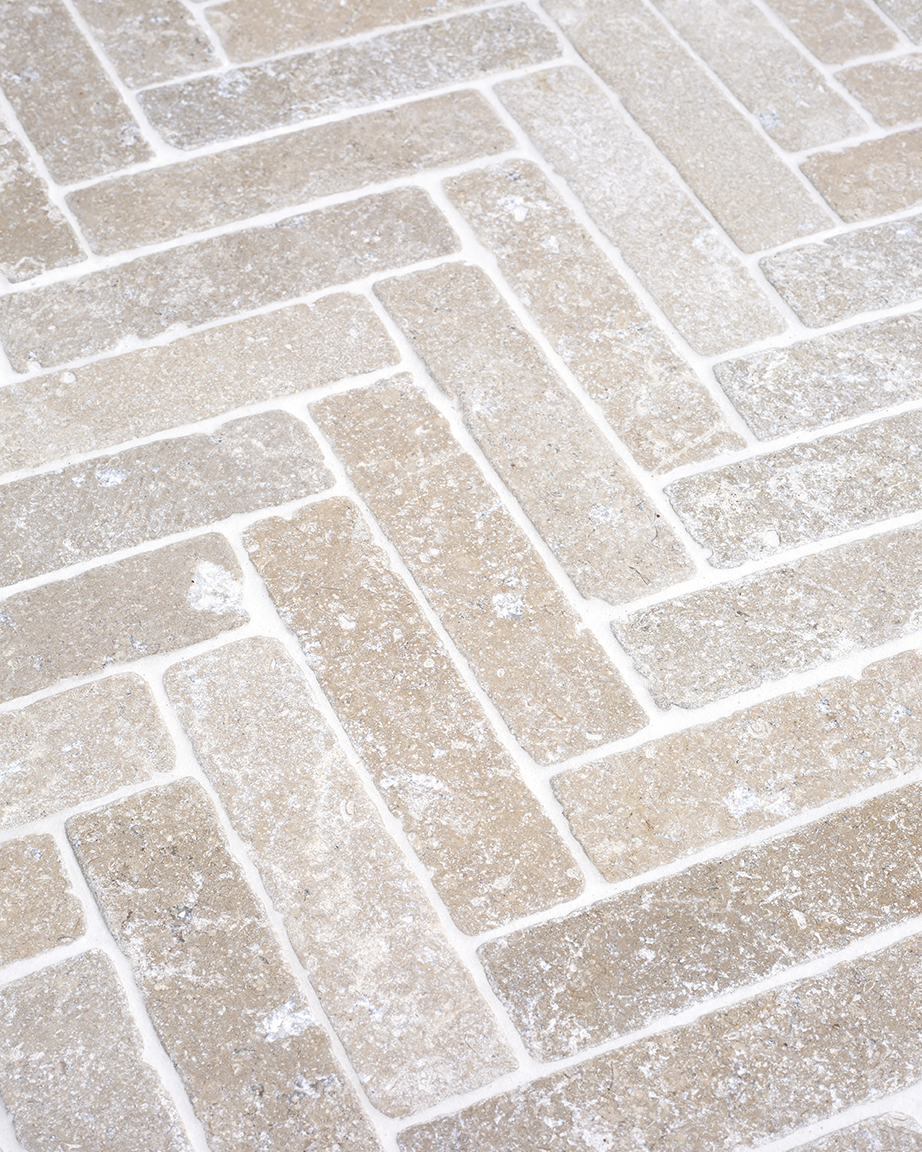A project that many people enjoy taking on is a bathroom renovation. Dijon limestone is a popular choice for bathrooms, however a question you may have when researching your project is what are the best Dijon limestone tiles for bathrooms?
There are many different tile sizes and finishes on offer with Dijon limestone, which makes it a great option for bathrooms. This blog will cover which type of Dijon limestone is best for your bathroom project, allowing you to choose the best bathroom flooring for your preferences.

What tile size and format should I choose?
Naturally, bathrooms are often of a smaller size than some other spaces in a renovation project, such as kitchens and living rooms. This means that a smaller tile size is usually opted for.
This is to make the space appear bigger with more full tiles on show than there would be with a larger format tile. The Dijon limestone in a smaller rectangle format such as the 600 x 400mm is a great tile size for smaller bathrooms. For larger bathrooms, you may want to opt for a slightly bigger free length format such as the 400mm or 500mm wide options.
You can also experiment with different tile formats to create interest in your Dijon bathroom project. The Manoir Cabochon format features square tiles with the corners cut and contrasting grey cabochon inserts. This format is perfect for traditional Victorian style bathrooms.
Another variation on the usual rectangular format is the Opus pattern. This consists of varying sizes of square and rectangular tiles to form a repeating pattern. For bathrooms, the small Opus pattern is a great option, being the right size to work in these sorts of spaces.

There is also a slim, indoor Dijon cobble specifically for creating a herringbone pattern, which is becoming a popular bathroom tile option. These can be laid with or without a border and provide an added element of pattern and texture for any traditional or modern bathroom.

What finish is best for bathrooms?
When it comes to bathrooms, the finish of Dijon limestone you choose mostly comes down to what style the bathroom is designed around, and also the way in which the space is intended to be used.
For instance, the Dijon seasoned finish provides a more rustic, textured surface to the stone, as well as the Dijon tumbled which is perfect for bathrooms in more traditional properties. These finishes also have the benefit of added grip, making a great choice for areas such as wet rooms or walk in showers.
Alternatively, a more contemporary project may call for the Dijon brushed limestone, where the slight surface sheen and straight cut edges create a modern bathroom look. This finish is also available in a 12mm thick small rectangle format, which works particularly well on bathroom or shower walls. This can be paired with a pale, neutral metro tile for example to complete the look.

How do I clean Dijon limestone in a bathroom?
Ease of cleaning and general upkeep is always of high importance when choosing your perfect bathroom tile. Water, soaps and shampoos can cause stains and build ups of grime in a bathroom, but with the right cleaning process you need not worry about your Dijon limestone tiles being stained.
Sealant will provide a good barrier to staining for your Dijon bathroom tiles, as well as making them easier to clean.
For the cleaning process itself, there are many methods and products on the market, but for Dijon limestone the best way is to use a pH neutral cleaner suitable for natural stone – such as Lithofin Wash & Clean – diluted in a bucket of water with a mop. It is always best to keep wet mopping to an occasional clean where possible, using a hoover with a soft brush attachment for day to day maintenance, whilst for more stubborn soap or shower product stains, a stronger cleaner such as Lithofin Power Clean can be used.

Other FAQs
Are Dijon limestone tiles easy to look after and clean?
Dijon limestone tiles are naturally very dense and hardwearing, making them a practical option for homes that see plenty of footfall. There are a few key steps needed to look after your stone floor and keep it looking its best for years to come.
In short, Dijon limestone needs sealing upon installation which acts as a protective barrier against stains and requires resealing approximately every 4-5 years. Vacuuming with a brush attachment is recommended and spot cleaning any spillages promptly. Any harsh, acidic cleaners need to be avoided with natural stone – look for pH neutral cleaners and cleaners that say, ‘suitable for natural stone’. If you do have any stubborn stains on the tiles, there are products available to help remove these.
Is Dijon limestone suitable for underfloor heating?
Yes! Underfloor heating is perfectly suited with our natural stone and Dijon limestone tiles following the correct installation. We strongly advise the use of anti-fracture matting, which is industry standard. This is a thin membrane that should be installed between the screed and your tiles. This membrane protects the tiles from lateral sheer movements, allowing the screed to fracture without damaging the tiles.
We hope this post has been helpful in looking at the best Dijon limestone tiles for bathrooms, as well as guidance on the different sizes and finishes available with Dijon limestone.

